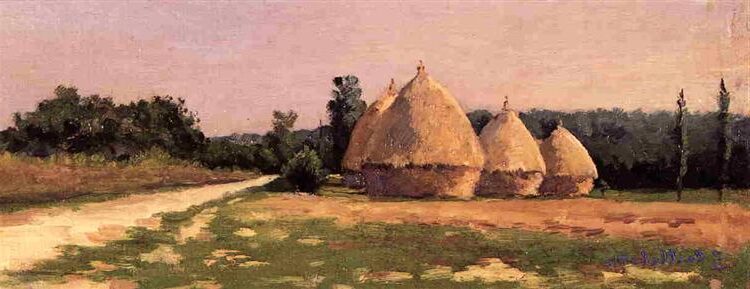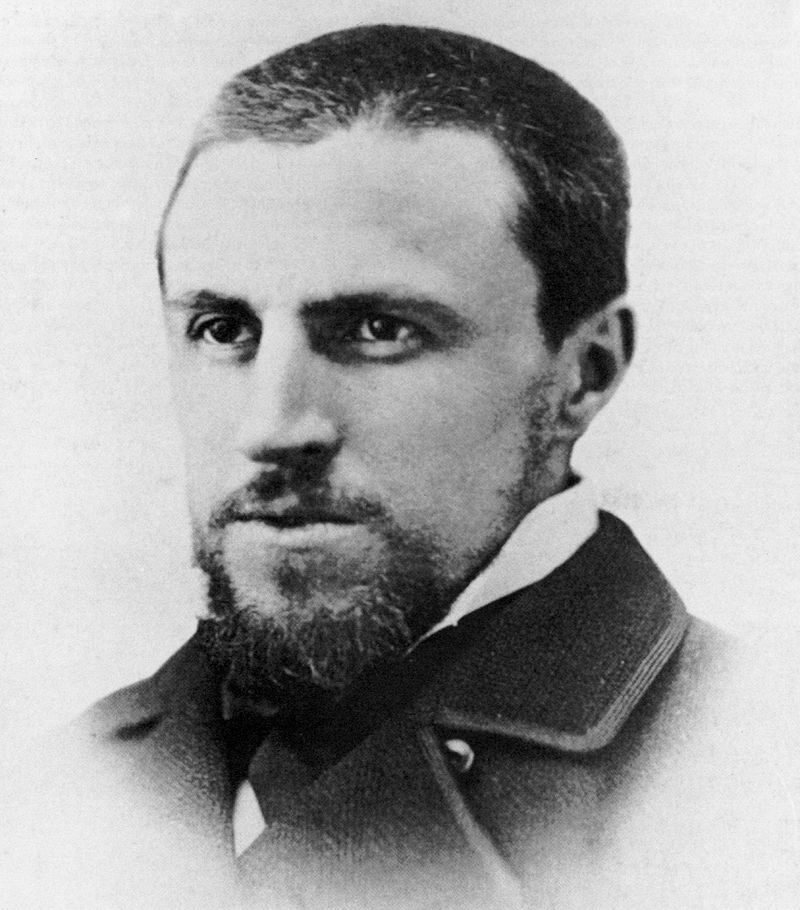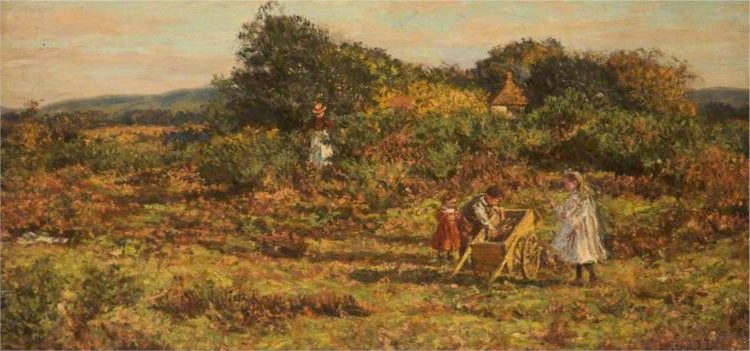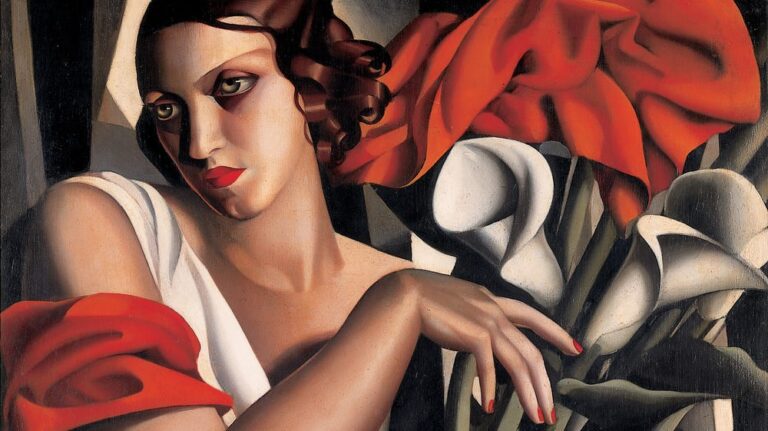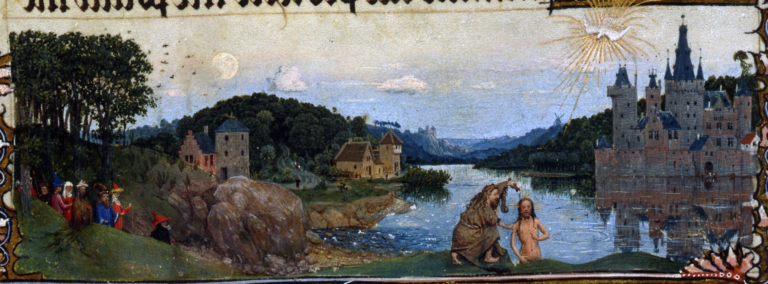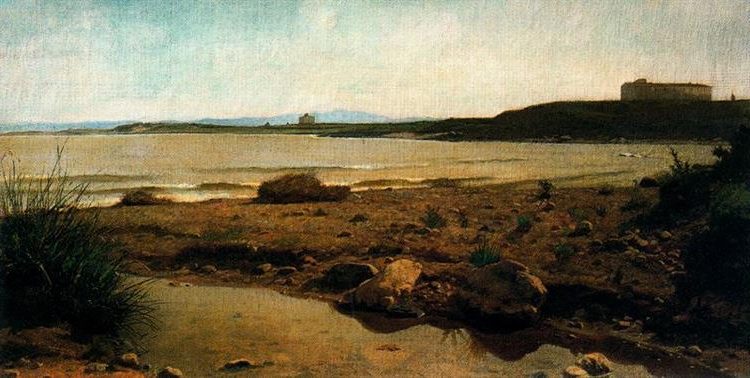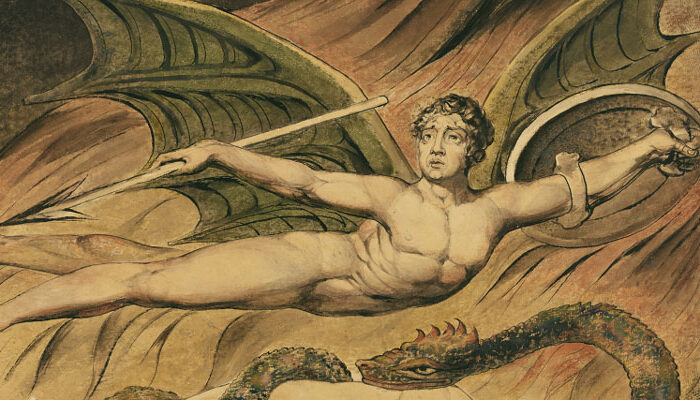Caillebotte Paintings: A Journey Through Impressionist Masterpieces
Born: 19 August 1848, Paris, France
Death: 21 February 1894, Gennevilliers, France
Art Movement: Impressionism
Nationality: French
Influenced By: Léon Bonnat
Institution: École des Beaux-Arts
Caillebotte Paintings: A Journey Through Impressionist Masterpieces
Gustave Caillebotte’s Life and Artistic Journey
Gustave Caillebotte was a prominent French painter known for his distinct approach to Impressionism. His early education and significant involvement with the Impressionist movement shaped his artistic path.
Early Life and Education
Gustave Caillebotte was born on August 19, 1848, in Paris, France. He grew up in a wealthy family, which allowed him to pursue his interests without financial pressure.
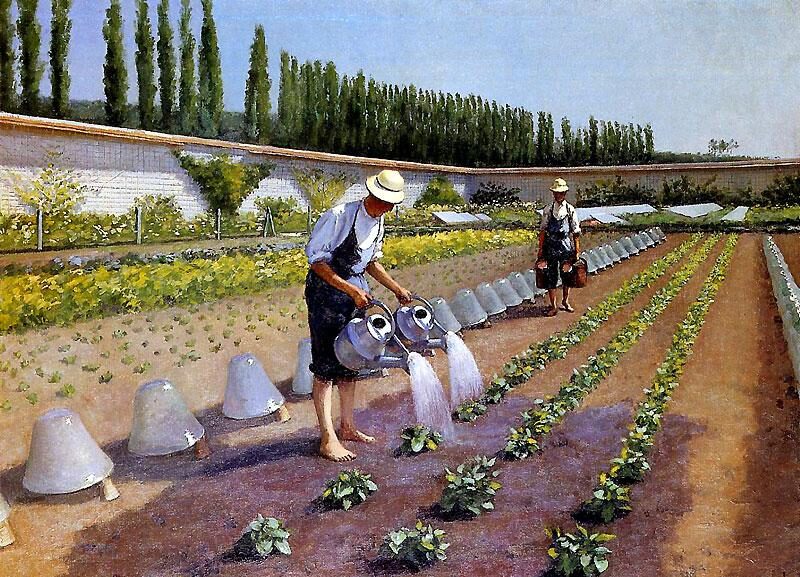
Les Jardiniers (1875) by Gustave Caillebotte
Caillebotte studied law and engineering before discovering his passion for art. He attended the École des Beaux-Arts in Paris, where he honed his artistic skills. Although he painted in a more realistic style compared to other Impressionists, his education equipped him with a strong foundation in traditional art techniques. Caillebotte’s background influenced his unique perspective, making his work stand out among his peers.
Association with Impressionists
Caillebotte became closely associated with the Impressionist movement, which was known for painting modern life and innovative techniques. He was friends with leading Impressionists like Pierre-Auguste Renoir and Edgar Degas.
He participated in several Impressionist exhibitions, showcasing his unique style that combined realism with elements of Impressionism. Additionally, Caillebotte played a vital role as a patron, supporting fellow artists financially and helping to organize exhibitions. His keen interest in photography also influenced his compositions, adding to the modern feel of his work.
His efforts and contributions ensured that the Impressionist movement gained wider recognition and acceptance.
Key Works and Artistic Style
Gustave Caillebotte’s art stands out for his realistic depictions and unique perspectives. His pieces offer insights into urban life and personal moments, capturing the essence of modern Paris.
Iconic Paintings and Exhibitions
One of Caillebotte’s most notable paintings, “The Floor Scrapers,” showcases his skill in portraying everyday life with a realistic approach. The piece highlights workers engaged in manual labor, emphasizing realistic manner with clear attention to detail.

Les Raboteurs de Parquet (The Floor Scrapers), 1875
Another iconic piece is “Paris Street; Rainy Day,” which uses perspective and a sense of depth to immerse the viewer in the city’s atmosphere.
Caillebotte’s “Nude on a Couch” reflects his interest in capturing private moments with a focus on light and shadow. His works often appeared in Impressionist exhibitions, where he was recognized for bridging realism with the loose brush strokes of his peers. These paintings embody urban life in Paris, providing a detailed look into its streets and inhabitants.
Techniques and Influence
Caillebotte incorporated techniques like cropping and perspective influenced by photography, allowing viewers to feel like part of the scene. His work also drew from Japanese prints, evident in his unique viewpoints and composition. Caillebotte’s use of optical truth created a sense of realism, distinguishing his paintings within the Impressionist movement.
Though part of the Impressionists, he added a layer of clarity not seen in Monet or Renoir’s more blurred images. Caillebotte’s technique influenced others by showing how detailed realism could coexist with the Impressionist ethos. His blending of styles and focus on modern subjects remain impactful in art studies today.
Influence and Legacy
Gustave Caillebotte played a significant role in the development of Impressionism and ensured the preservation of some of its key works. He not only contributed through his art but also supported other artists financially.

Fruits sur un étalage (1882) by Gustave Caillebotte
Caillebotte’s Impact on Impressionism
Caillebotte’s influence on the Impressionist movement was multifaceted. His paintings added a unique touch with realistic scenes and modern perspectives. Unlike many of his Impressionist peers, he often chose urban life as his focus, capturing the bustling streets of Paris with precision.
His financial support to fellow artists like Claude Monet was pivotal. By purchasing their paintings and organizing exhibitions, he helped propel the Impressionist movement forward. Museums across the world, including the Art Institute of Chicago, now feature his work, highlighting his ongoing impact on art.
Preservation of His Work
Despite his significant contributions, Caillebotte’s work was underappreciated for many years. He had bequeathed several of his pieces to the French government, which led to the first major exhibition of Impressionist art at the Luxembourg Palace in 1897.
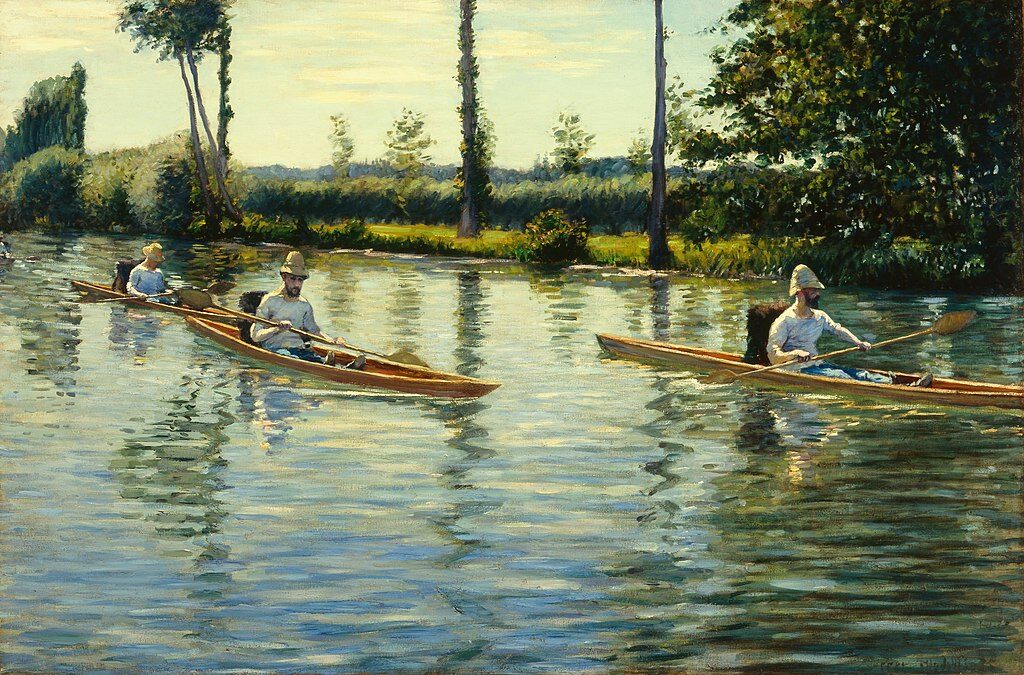
Boating on the Yerres (1877) by Gustave Caillebotte
This initiative laid the groundwork for collections in prominent museums such as the Musée d’Orsay. Over time, American interest in Impressionism grew, leading to more retrospective displays, which further secured his legacy. His ability to blend realistic elements with the Impressionist style ensures that his work remains relevant today.
Themes and Subjects in Caillebotte’s Art
Gustave Caillebotte captured the essence of modern life in late 19th-century Paris. His work is notable for its focus on urban life, modernity, and personal moments in both bustling cityscapes and serene, intimate settings.
Urban Life and Modernity
Caillebotte is celebrated for his unique portrayal of urban life, emphasizing the architectural transformations of Paris. “Paris Street, Rainy Day” is a perfect example, featuring Parisians navigating the wet streets under umbrellas, against a backdrop of grand buildings. This painting highlights modernity through both its content and precise perspective.

Paris Street, Rainy Day (1877) by Gustave Caillebotte
The iron bridges and wide boulevards depicted in his works, such as in “Man on a Balcony,” reflect the changing face of the city. He embraced engineering as a subject, drawing focus to the systematic elements and materials that defined modern Paris.
Portraits and Still Life
Caillebotte’s art also delves into intimate portrayals through portraits and still life paintings. His work, “Portraits in the Country,” showcases people in relaxed, thoughtful poses, offering a glimpse into their private worlds. His “Self-portrait with Pith Helmet” reveals his ability to capture personality and mood.
In works like “Yerres, Garden” and his paintings of Parc Monceau, Caillebotte turned his attention to more tranquil settings. These pieces often included lush gardens and reflective ponds. His still life paintings are composed with meticulous attention to detail, focusing on everyday items that convey the simplicity and richness of everyday life in a private collection.
Caillebotte’s Artistic Environment
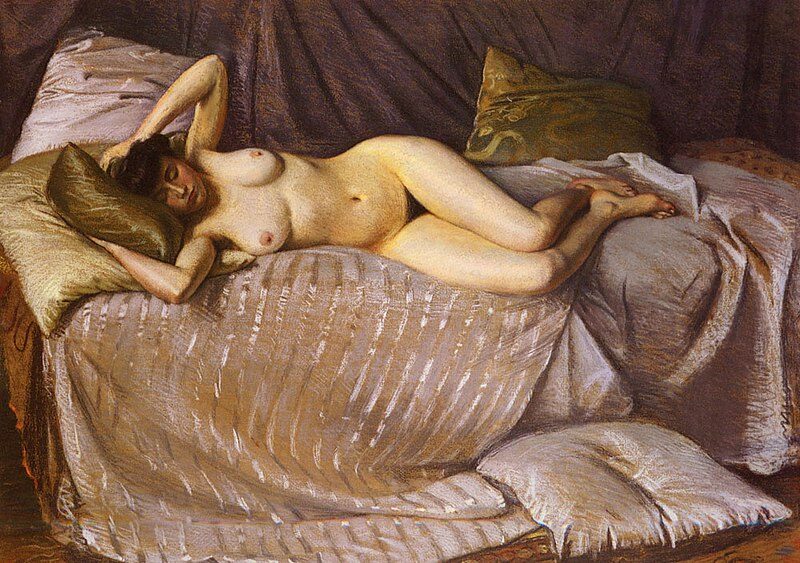
Nude Lying on a Couch (1873) by Gustave Caillebotte
Gustave Caillebotte was deeply involved in the world of French Impressionism, building significant connections with fellow artists and focusing on capturing modern life in Paris. His relationships and urban scenes highlight both his unique style and influence.
Relationship with Other Artists
Caillebotte had strong relationships with fellow Impressionists like Renoir, Degas, and Pissarro. These connections had a major impact on his work and career. Though he shared ideas with them, Caillebotte’s style was distinctive with more realism. He financially supported many of his peers, helping fund exhibitions and purchasing their art.
Caillebotte also admired Georges Seurat, a leading figure in the Post-Impressionist movement. His collaborations and communication with these artists enriched his work, ensuring his art remained fresh and varied.
Parisian Scenes and Landscapes
Caillebotte’s paintings often depicted everyday life in Paris with a modern touch. Pieces like Le Pont de l’Europe and Gare Saint-Lazare show his interest in industrial change. He had a talent for capturing the hustle and bustle of the city, conveying the impact of industrialization.
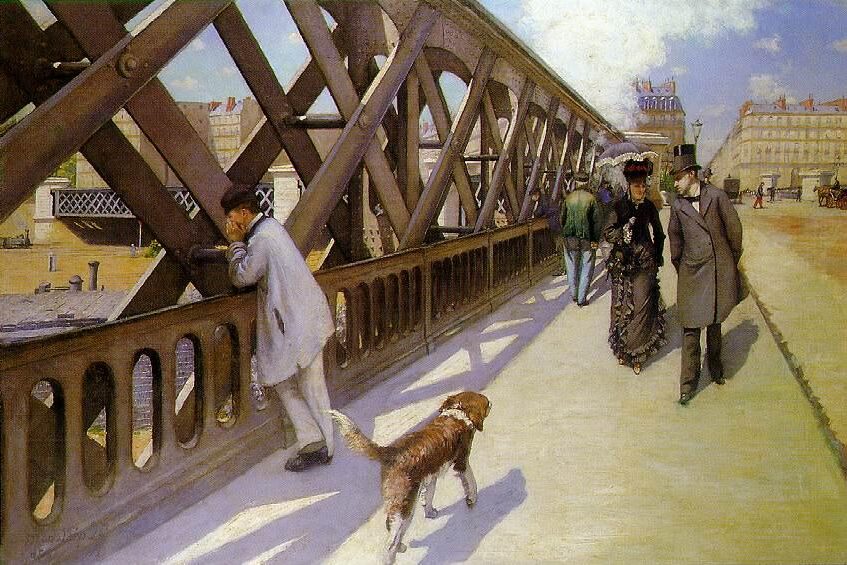
Le Pont de l’Europe (1876) by Gustave Caillebotte
His landscapes, such as those of Sailing Boats at Argenteuil, reveal a softer side. The balance between urban landscapes and serene portraits offers insight into his versatility. While House Painters highlights the working class, his artistic contributions provide a rich view of late 19th-century Paris.
Frequently Asked Questions
Gustave Caillebotte is known for his unique contributions to the Impressionist movement. His artworks often showcase detailed urban scenes and thoughtful perspectives. Through both his paintings and support for fellow artists, Caillebotte played a significant role in the art world.
What are the most famous works of Gustave Caillebotte?
Some of Caillebotte’s notable paintings include Paris Street; Rainy Day and The Floor Scrapers. These works display his distinctive style and attention to detail, capturing everyday life with a unique perspective and emphasis on spatial depth.
Where can one view Caillebotte’s paintings in person?
Caillebotte’s paintings can be seen in major museums, such as the Musée d’Orsay in Paris and the Art Institute of Chicago. These institutions hold some of his most notable works, offering an opportunity to experience them firsthand.
What artistic movement is Gustave Caillebotte associated with?
Gustave Caillebotte is associated with the Impressionist movement. He worked alongside artists like Monet and Renoir, contributing significantly to the style and bringing a realistic approach to his subjects.
What are the recurring themes in Caillebotte’s artworks?
Caillebotte’s artworks often depict urban life, with themes focusing on cityscapes and domestic interiors. He presents these scenes with a keen eye for perspective, capturing both the grandeur and intimacy of everyday settings.
How has Caillebotte contributed to the impressionist movement?
Caillebotte not only participated actively as a painter but also supported other artists financially. He organized exhibitions and was instrumental in promoting Impressionism, helping his contemporaries gain recognition and success.
What influence did Caillebotte have on other impressionist painters?
Caillebotte influenced his peers by offering financial support and promoting their work. His dedication to organizing joint exhibitions helped establish the Impressionist movement as a respected art form. This allowed many artists to gain wider exposure.

